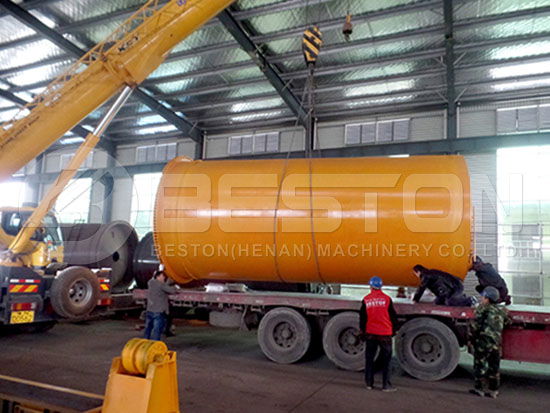Know More About Tire to Oil Plant Cost, ROI And Popularity
Cost
In terms of tyre to oil plant cost, there are many of factors that can come into account. A number of the many factors that influence the cost of pyrolysis machine include reactor size, reactor pattern, working method, daily capacity, total power, operating pressure, cooling method, heating materials, and life-span. Should you be looking to the lowest coast tire to oil machinery and never have to compromise on quality, you should take time to look at a number of the many great manufacturers in China. Many people often feel wary about buying industrial machines from overseas suppliers, but when it comes to pyrolysis plants, there is absolutely no method that domestic suppliers can compete when it comes to price and costs with manufacturers situated in China.

ROI
The return on your investment rate within the tire recycling industry can be quite high whenever you purchase the most up-to-date waste pyrolysis technology. With a pyrolysis machine, it is possible to convert scrape tires into pyrolysis oil, carbon black, steel wire and combustible gas. All of those end products have high value and are really easy to trade inside the global market space. A standard car tire is comprised of 45 plus% fuel oil, which many the value of one great deal of used tires can exceed over $600. Steel wire extracted from scrap tires is likewise very valuable and can easily be sold in the waste metal market.
Arguably one of the better things the pyrolysis process, however, is that it is not going to bring about any environmental pollution. This simply means tyre recycling business can avoid large fines from government environmental standards agencies and regulatory bodies.
Popularity
The buzz of pyrolysis machines continues to be increasing significantly recently as more and more countries seek to find eco-friendly ways to cope with mounting scrap tires and rubber waste. Sending worn tires to landfill sites could well be one of the least eco-friendly disposable methods, yet millions of tires still get send to landfill sites world wide each and every year. Fortunately, situations are changing and also as more regions invest in tire to oil plant, we should learn to see a decline in the irresponsible disposable of scrap tires. Several of the countries already buying a lot of rubber pyrolysis plants include South Africa, the UK, the Philippines and more.
Technology
The technology behind modern pyrolysis machines is relatively simple. Waste rubber is fed into an oxygen-free reactor chamber which is heated to a extremely high temperature. The absence of oxygen within the reactor signifies that materials vaporize rather than burn, so no smoke is produced. Oils of numerous viscosities are taken from the waste rubber by raising the temperature in the reactor. The oil vapor is changed into liquid form using water-cooled condensing systems and fed into tanks for simple distribution. The tire to oil plant operators opt to invest in oil distillation machinery in order to convert the heavy fuel oil produced during tire pyrolysis into more profitable gasoline and diesel. More details can be found: https://ecobeston.com/waste-tire-to-oil-plant/.



